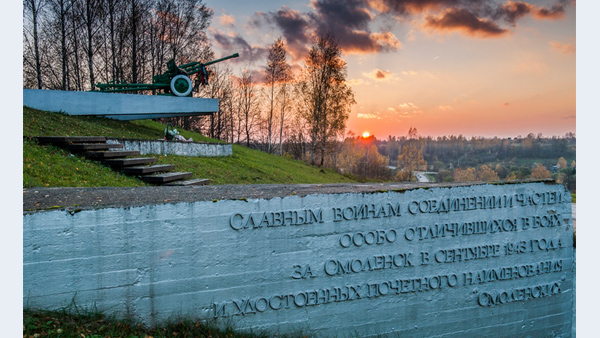The canon against tanks and aircraft

In July 14, 1941 Nazi troops reached the nearest approaches to Smolensk.
They broke to the city from the southern side of the Krasninsky highway. The desperate parts of the Soviet 16th Army under the command of General Lukin retreated by battle and had no opportunity to prepare properly for the defense of Smolensk, it was necessary to use any means. A combined unit two-battalion composition (which included, additionally, the Smolensk militia and a group of guards), was pulled towards the German tanks and consolidated the artillery regiment (of 26 guns).
In the first armed clash, Nazis, who did not expect to find an organized resistance in this direction, suffered heavy losses from the fire of our canons. However, the precisely adjusted interplay between the various branches of the military allowed the enemy to call for reinforcement bombers quickly, and as a result killed many Soviet gunners. However, the bravery and the courage of our soldiers allowed them to delay the marching of the Germans nearly on one day.
In September 1943, at the same place again, there was a fierce fighting, but this time the power of the Soviet artillery was not comparable to the summer of 1941. Under its attacks Nazis in panic retreated farther and farther to the west…
In 1981, near the Yasennaya village, at the entrance to Smolensk from the southern side, on the the paved road leading to the Krasny village , to commemorate the heroism of the Soviet artillery soldiers in battles against the Nazi invaders during the defense and Smolensk liberation, was set a memorable symbol – a famous Soviet 76-mm ZIS-3 cannon, one of the best and most massive instrument of the Second World War.
The cannon stands on a concrete pedestal in the form of two rectangular beams. To the left and below of it – there is a concrete stele, with the list of artillery parts (including mortars and anti-aircraft) (total — eleven), which were given the name «Smolensk». At an 45 angle to the stele joins the other one, identical in size, with the cast letters made in the inscription: «To glorious warriors of formations and units, who distinguished particularly in the Smolensk battle in September 1943 and were awarded the honorary title of Smolensk.»
The memorial symbol – the Cannon, set in 1981 in honor of the Guardian unions Soviet troops liberated the Smolensk city in 1943 by the Nazi occupiers, is the object of cultural heritage (the monument of history and culture) of regional importance.

